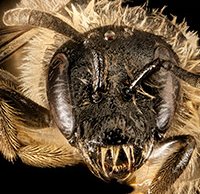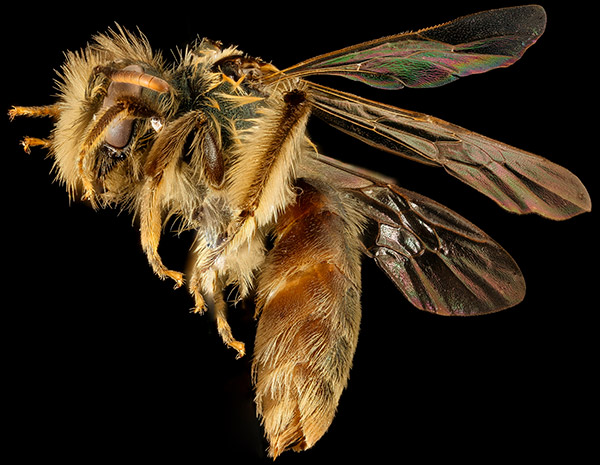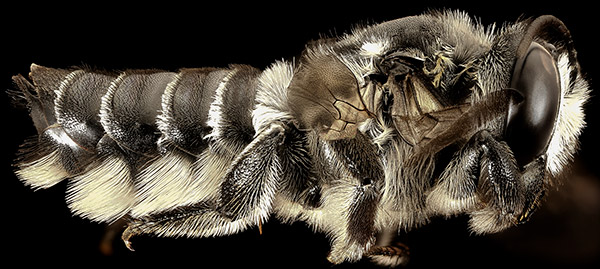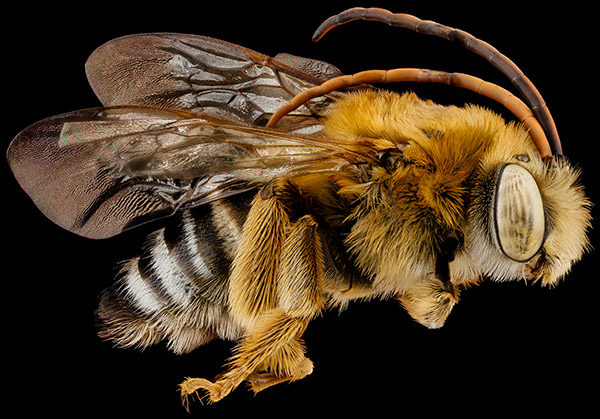You won’t bee-lieve these macro images: USGS bee lab uses Canon 5D Mark II to catalog pollinators
posted Monday, November 7, 2016 at 4:00 PM EDT

This fall, seven types of bees were added to the US federal list of endangered and threatened species. This marked the first time that bees have been on the list. Considering the importance of bees as pollinators of fruits, nuts and vegetables, their introduction to the endangered species list marks a serious concern for the agricultural economy and global food production.
Beyond their importance in the environment, and the importance of biodiversity as a whole, bees are also fascinating creatures to look at. In that spirit, the USGS Native Bee Inventory and Monitor Lab (BIML) has been photographing and cataloging bee species. Even better, they've hosted over 3,000 images on their Flickr page and published the images to the public domain.
As macro photographers know, the shallow depth of field when shooting a subject very close can make capturing sharp images quite difficult. To help create images that are sharp from front to back, you can utilize focus stacking, a technique wherein you capture images at different focus distances and then combine them during post-processing to digitally increase the depth of field. If you'd like to read more about this, particularly in the context of insect macro photography, check out our piece from earlier this year on Levon Biss, who combines up to 10,000 images of a single insect captured with a microscope lens to create highly-detailed, massive photographs.
I've selected a few of my favorite images from the USGS BIML and included them below, but be sure to peruse the album on your own and let us know your favorites in the comments below.



Not only are all of the images in the public domain, but the USGS BIML is very open about its photographic techniques as well and there is a lot to be learned from them. They have published a detailed look at their set-up and the gear they used, which you can read about here. The backbone of their setup is a Canon 5D Mark II with a Canon manual MP-E65mm f/2.8 macro lens. They use a Canon MT24EX macro flash as well, with flash power set manually. Aperture values range from f/5.0 to 7.1, ISO speeds are often low, between 100 and 250, exposure times are 1/80s to 1/200s in most cases. The guide linked above discusses how they use their StackShot rail as well. Post-processing work includes stacking shots in Zerene software and using Photoshop to tweak color, sharpness and remove specks of dirt and any specimen pins that might be visible in the final shot, particularly when looking at a subject's eyes, which tend to attract a lot of pieces of dust and fibers during shooting.
(Seen via DIY Photography. Index image. All images in this article are in the Public Domain and can be viewed in this Flickr album. All images have been cropped for the purposes of this article.)